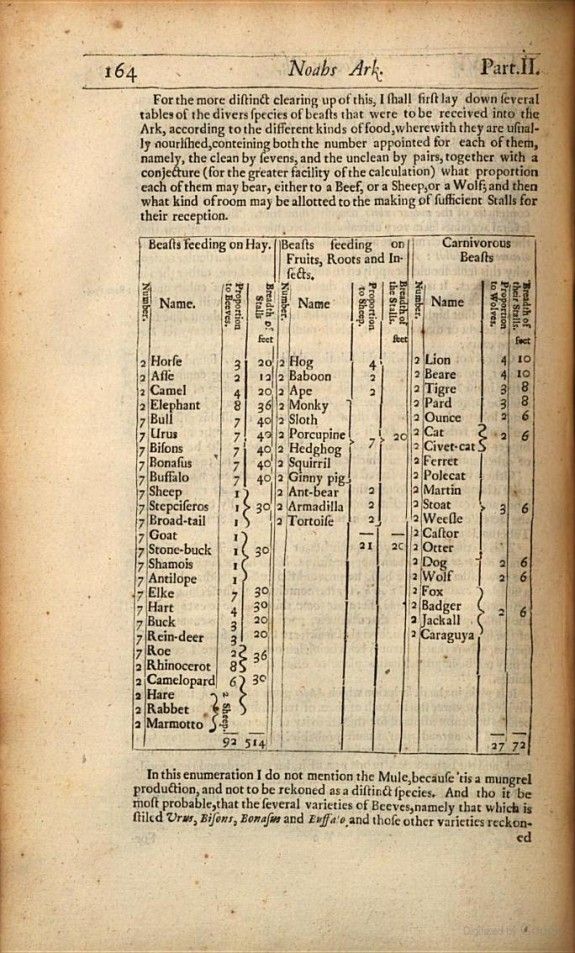How One 17th Century Scholar Reconciled Newly Discovered Species And the Space on Noah’s Ark
Here’s how Bishop John Wilkins got all the animals to fit on Noah’s Ark
/https://tf-cmsv2-smithsonianmag-media.s3.amazonaws.com/filer/2013102810102410_28_2013_noahs-ark.jpg)
In the mid-1600s, when science and religion were much more closely aligned, naturalists were discovering and identifying an ever expanding array of plants and animals. But for some, the Bible was an authoritative text. How, they wondered, could they account for all these new species on Noah’s ark?
Bishop John Wilkins took on the “Atheistical scoffers” who dared say the expanding diversity of the natural world was an argument against “the truth and authority of Scripture.” (He also took on the task of debunking the existence of dragons.) Wilkins’ rebuttal, laid out in his 1668 text An Essay Towards a Real Character, and a Philosophical Language, tried to work out exactly how many of which animals would fit in Noah’s Ark, a vessel whose dimensions were “set down to be three hundred cubits in length, fifty in breadth, and thirty in height.” He even made a chart:

Here’s how Wilkins thought this problem through:
It is plain in the description which Moses gives of the Ark, that it was divided into three stories, each of them of ten cubits or fifteen foot high, besides one cubit allowed for the declivity of the roof in the upper story. And ’tis agreed upon as most probably, that the lower story was assigned to contein all the species of beasts, the middle story for their food, and the upper story, in one part of it, for the birds and their food, and the other part for Noah, his family and utensils.
Now it may clearly be made out, that each of these stories was of a sufficient capacity for the conteining all those things to which they are assigned.
Wilkins’ trick to getting all the animals to fit, says a different John Wilkins, for The Conversation, was actually an important scientific moment in its own right. The 17th-century Wilkins laid out what is probably the first-ever biological definition of “species.” By leaving out the sub-species or hybrids, like mules, Wilkins could free up some room on the boat. He also left the turtles and “seales” and crocodiles, and other things “usually described to be such kind of Animals as can abide in the water” to their own devices.
More from Smithsonian.com:
One of the World’s Oldest Bibles Is Now Online
Thomas Jefferson’s Bible Is Sent to the Conservation Lab
/https://tf-cmsv2-smithsonianmag-media.s3.amazonaws.com/accounts/headshot/smartnews-colin-schultz-240.jpg)
/https://tf-cmsv2-smithsonianmag-media.s3.amazonaws.com/accounts/headshot/smartnews-colin-schultz-240.jpg)